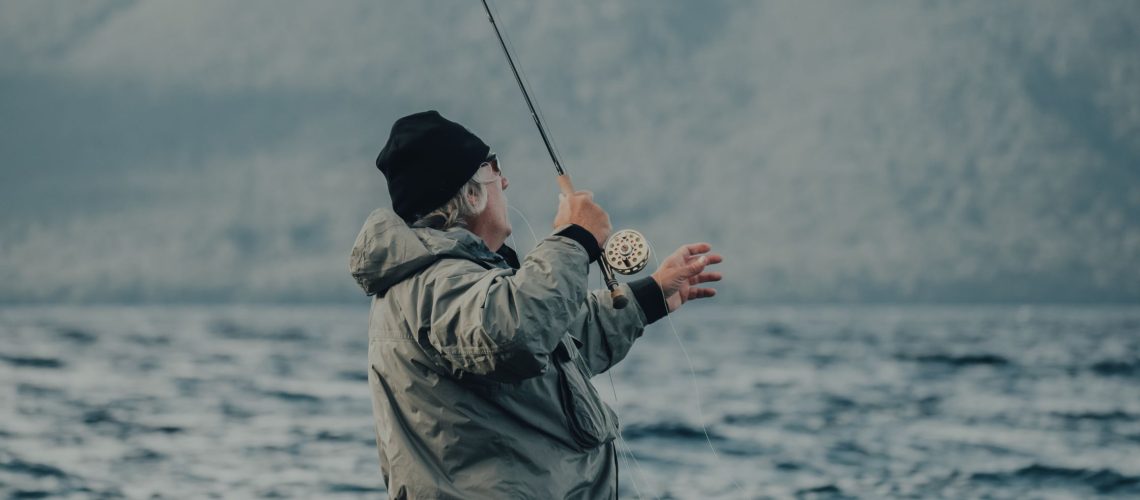As the water cools, bass quickly move to the edges of weed lines. When scouting the structure, you’ll find pike and muskie in ambush spots while larger fish wait for the right moment to strike. Target shallow flats for panfish or focus on trout feeding on late hatches to discover effective fishing patterns. Ready to dive in?
1. Fall Bass: Targeting Largemouth and Smallmouth Near Vegetation
Fall bass fishing centers on vegetation, where both Largemouth and Smallmouth stage up as water cools. You scan edges and pockets where weedlines meet drop-offs, then move with the warmth along shoreline flats.
Focus on Largemouth hotspots where cover and baitfish concentrate, and keep eyes on baitfish locations to predict ambush spots. Use Smallmouth strategies near cool pockets and rockier structures adjacent to vegetation.
Your crankbait techniques work well early, plus subtle jig pulls when the sun lowers. Monitor water temperature changes to adjust depth, staying patient until bites come consistently.
2. Muskie Maneuvers: Patience and Big Baits in Cooler Waters
Muskie fishing demands patience and big baits when the water cools, since muskies slow down and key bites come from strategic ambush spots.
Rely on deliberate casts, precise retrieves, and staying alert for subtle follows. In cooler temperatures, adjust bait selection to oversized jerkbaits, musky spoons, and slow-trolling; size and action matter more than speed.
Use seasonal strategies that emphasize longer pauses and opportunistic pauses between motions. Maintain calm, focused technique, and avoid rushing the take.
Patience techniques pay off with longer fights and fewer missed opportunities, especially when visibility improves and baitfish schools tighten.
3. Panfish Patterns: Shallow Structure, Weeds, and Sinking Flies
Panfish are most active in shallow waters with weeds and rocky areas that provide good hiding spots. Look for them around structures, as your approach is important.
Use precise fishing techniques: short casts, steady retrieves, and quick pops to imitate fleeing prey.
Seasonal behavior shifts with water temperature, so adjust depth and timing accordingly.
For bait selection, soft plastics or live bait work in weeded edges, while sinking flies probe deeper pockets.
Target weed lines, edges, and drop-offs for bites, then reel smoothly.
Stay quiet, observe water clarity, and adapt to the bite window as temps drop.
- Panfish habitats
- Fishing techniques
- Seasonal behavior
- Bait selection
- Water temperature
4. Pike Pursuits: Vegetation, Big Topwater, and Lure Variation
Pike chase through living vegetation, so target weedlines and submerged breaks where they can ambush prey.
Notice pike behavior shifting as temperatures cool, with chases tightening along edge vegetation and productive vegetation hotspots.
Use topwater strategies early and late in the day to provoke explosive strikes, then switch to sinking or diving lures as the sun climbs.
Lure selection matters: choose baits that match pace and depth—larger profiles for suspended prey, tighter patterns for hiding fish.
Focus on fall fishing techniques that emphasize structure, current seams, and weed edges, keeping your presentation steady and decisive.
5. Trout Tactics: Fall Readiness, Fly Fishing, and Hatch Matching
Trout become particularly hungry in fall, so readiness is all about matching behavior to cooler days and shorter light.
You stay sharp by noticing hatch timing and adjusting your fly selection accordingly, keeping water temperature in mind.
Improve casting techniques with deliberate, accurate presentations, especially when drift and line control matter.
Insect identification helps you mirror the hatch, from mayflies to caddis.
Stay mobile, cast toward seams, and keep your dries and nymphs productive.
Remember to vary retrieves, read the current, and fish slowly when trout hesitate, waiting for subtle feeding windows.
- Hatch timing
- Fly selection
- Water temperature
- Casting techniques
- Insect identification
6. Walleye Moves: Early Fall Shallowing and Structure-Driven Tishing
As early fall arrives, walleye start moving into shallower water and shifting around structure where they can ambush baitfish.
Notice early fall patterns funneling them toward edges and humps, where insulated pockets stay warmer.
Learn structure types—from breaklines to mid-depth flats—where fish suspend and strike at bait.
Your bait selection should favor small to medium crankbaits, jigs, and live minnows tuned to nearby prey.
Refine fishing techniques to work slowly along seams and drop-offs, pausing to mimic injured bait.
Monitor water temperature; the 50s to low 60s often trigger more aggressive moves without rush.
Your Fall Advantage Starts with Yellow Bird
As autumn patterns shift and fish feed with urgency, having the right tools can turn good days into unforgettable ones. Yellow Bird Products puts proven performance in your hands with an extensive lineup of trusted, brand-name gear—innovations pioneered by anglers, for anglers. From the original, industry-leading Yellow Bird planer boards that spread your presentation and cover more water to precision-engineered divers, attractors, and terminal tackle from respected names under the Yellow Bird umbrella, every piece is designed to help you locate, entice, and land more fish when it matters most.
For over 125 years, Yellow Bird has backed its products with American ingenuity, quality manufacturing, and a customer-first mindset. That means durable components that stand up to cold fronts and rough chop, thoughtful features that make quick adjustments easy, and consistent performance across species—from walleye and trout to pike, panfish, bass, and muskie. Whether you’re fine-tuning speeds, dialing in depth, or finessing spread and angle, Yellow Bird’s gear helps you read fall water faster, present more effectively, and capitalize on every window of opportunity.
Equip your boat with confidence. Choose Yellow Bird Products to fish smarter, cover more water, and turn autumn’s hints into hookups. The season is short—make every pass count with the brand anglers have trusted for generations.

